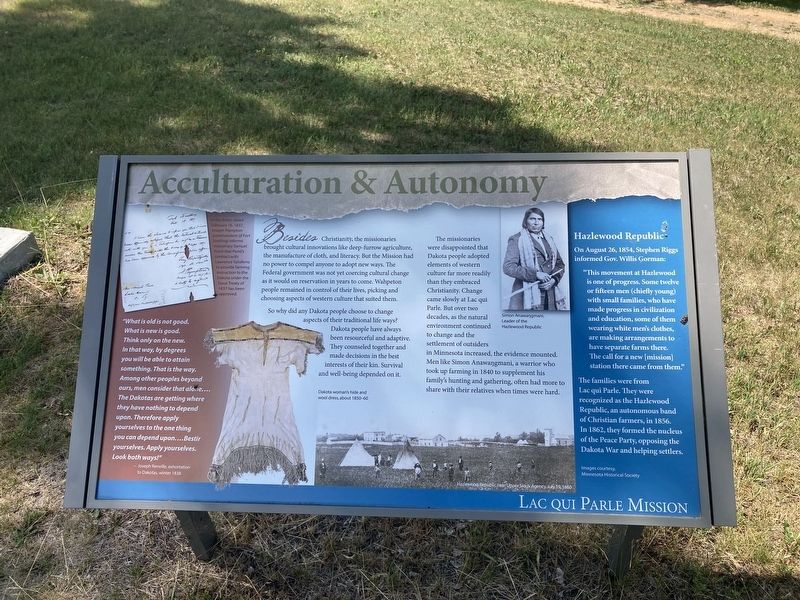Acculturation & Autonomy
- Joseph Renville, exhortation to Dakotas, winter 1838
Christianity, the missionaries brought cultural innovations like deep-furrow agriculture, the manufacture of cloth, and literacy. But the Mission had no power to compel anyone to adopt new ways. The Federal government was not yet coercing cultural change as it would on reservation in years to come. Wahpeton people remained in control of their lives, picking and choosing aspects of western culture that suited them.
So why did any Dakota people choose to change aspects of their traditional life ways? Dakota people have always been resourceful and adaptive. They counseled together and made decisions in the best interests of their kin. Survival and well-being depended on it.
The missionaries were disappointed that Dakota people adopted elements of western culture far more readily than they embraced Christianity. Change came slowly at Lac qui Parle.
But over two decades, as the natural environment continued to change and the settlement of outsiders in Minnesota increased, the evidence mounted. Men like Simon Anawangmani, a warrior who took up farming in 1840 to supplement his family's hunting and gathering, often had more to share with their relatives when times were hard. Hazelwood Republic
On August 26, 1854, Stephen Riggs
informed Gov. Willis Gorman:
"This movement at Hazlewood is one of progress. Some twelve or fifteen men (chiefly young) with small families, who have made progress in civilization and education, some of them wearing white men's clothes, are making arrangements to have separate farms there. The call for a new [mission] station there came from them.”
The families were from Lac qui Parle. They were recognized as the Hazlewood Republic, an autonomous band of Christian farmers, in 1856. In 1862, they formed the nucleus of the Peace Party, opposing the Dakota War and helping settlers.
Captions:
Top left:
In this letter, dated
February 16, 1837
Joseph Plympton
(commandant of Fort
Snelling) informs
missionary Samuel Pond that Pond's
contract with
Lawrence Taliaferro
to provide farming
instruction to the
Dakota under the
Sioux Treaty of
1837 has been
approved.
Top right: Simon Anawangmani, Leader of the Hazelwood Republic
Erected by Minnesota Historical Society.
Topics. This historical marker is listed in these topic lists: Agriculture • Churches & Religion • Native Americans • Wars, US Indian. A significant historical year for this entry is 1840.
Location. 45° 1.416′ N, 95° 52.09′ W. Marker is near Churchill, Minnesota, in Chippewa County. Marker can be reached from 140th Avenue Northwest (County Road 32) near 1st Street West (County Road 13). Located the the Lac qui Parle Mission State Historic Site. Touch for map. Marker is in this post office area: Watson MN 56295, United States of America. Touch for directions.
Other nearby markers. At least 8 other markers are within walking distance of this marker. Williamson Cabin (a few steps from this marker); Missionaries at Lac qui Parle (a few steps from this marker); Dakotas at Lac qui Parle (a few steps from this marker); The ABCFM (a few steps from this marker); Huggins Cabin (within shouting distance of this marker); The Dakota (within shouting distance of this marker); Lac qui Parle Mission (within shouting distance of this marker); Lac qui Parle Mission & Fort Renville (within shouting distance of this marker). Touch for a list and map of all markers in Churchill.
Credits. This page was last revised on July 5, 2021. It was originally submitted on July 4, 2021, by Connor Olson of Kewaskum, Wisconsin. This page has been viewed 141 times since then and 17 times this year. Photos: 1, 2. submitted on July 4, 2021, by Connor Olson of Kewaskum, Wisconsin. • Mark Hilton was the editor who published this page.

